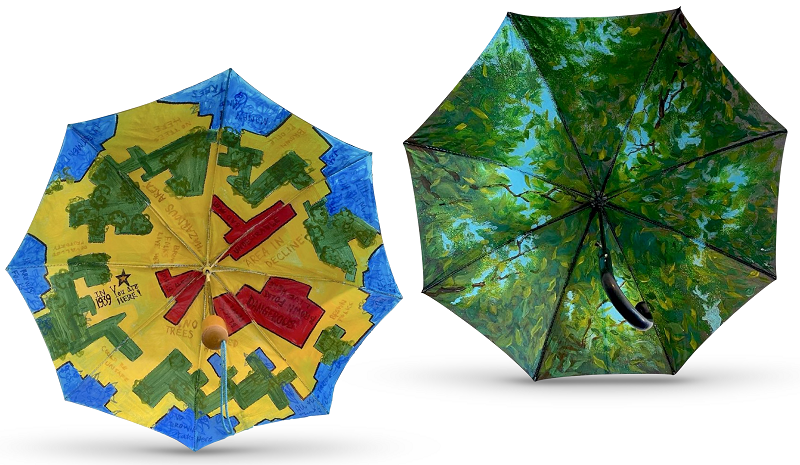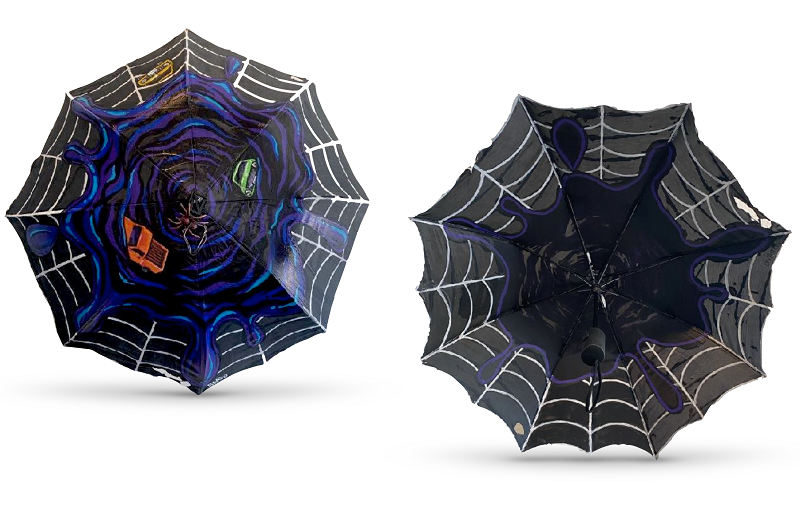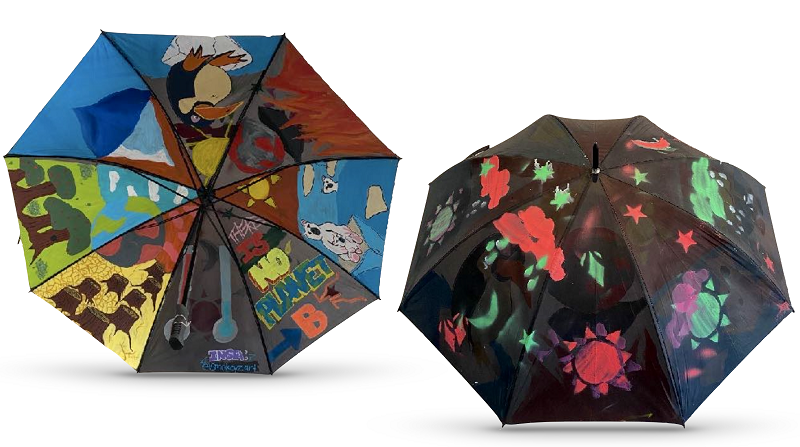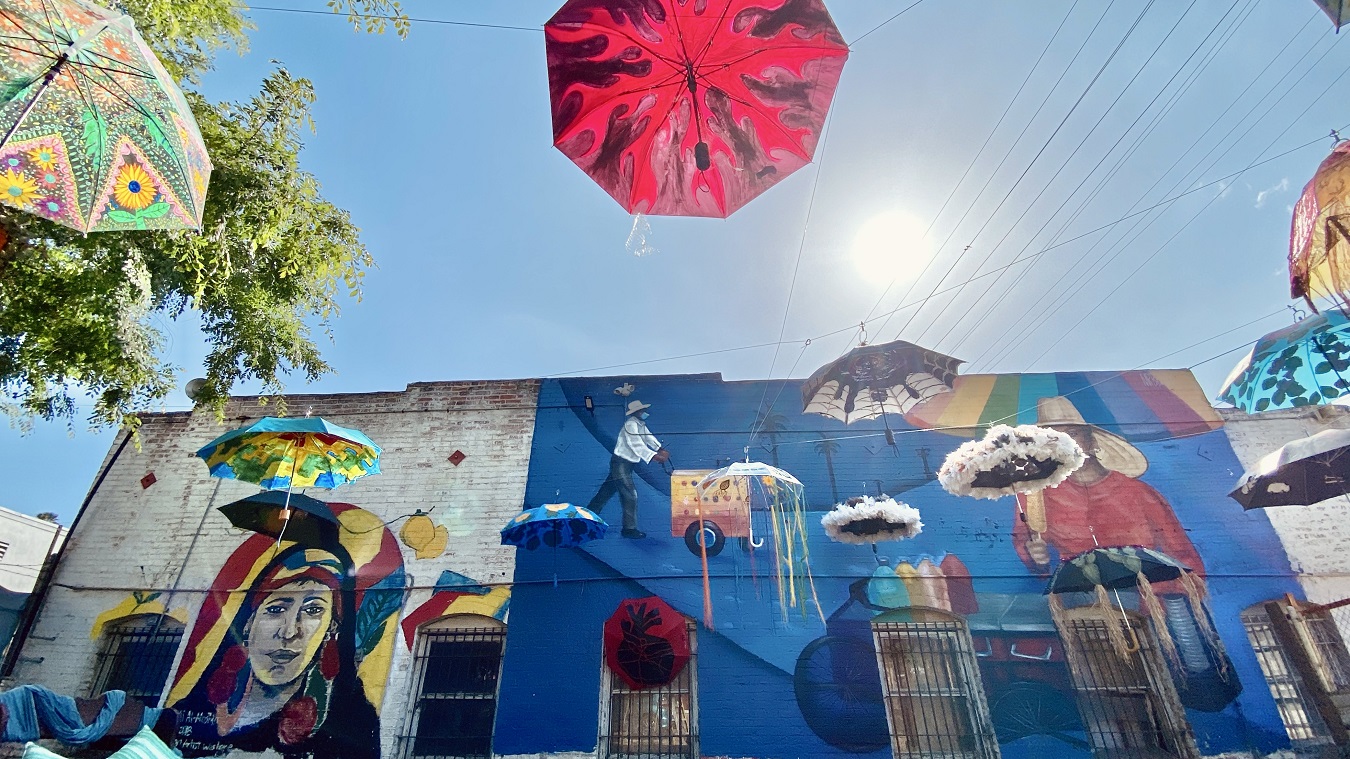This is the second entry in a multi-part series, "2030 Landscapes: Visions for California's Nature and Communities," showcasing community perspectives on how we can protect 30% of lands and waters by 2030. Check back next month for more California landscapes. You can read other entries in the series here:
-
2030 Landscapes: Visions for California's Nature and Communities
- 2030 Landscapes: Raízes – From South Central to Pacoima
Ask anyone not from Los Angeles what images LA conjures up and you’re liable to hear three things: Cars. Palm trees. Sunshine.
In the mid-twentieth century people moved to LA in droves, seeking opportunity in a city blessed with sunny weather and a favorable climate year-round. But as the planet warms and California shatters climate records year after year, what was once considered a blessing for the LA region is turning Shangri-La into a harsh and unforgiving place for many.
Urban heat causes more deaths than all other weather-related causes combined, and cities in California are no exception.
Reducing urban heat exposure by increasing access to shade is an equity issue because low-income communities and people of color are likely to live in neighborhoods with fewer trees, poor building insulation, more heat-retaining built surfaces, and limited access to cool spaces that provide respite during a heat wave.
The good news is that there are local solutions to this global problem. Nature in cities reduces temperature extremes, saves lives, and makes neighborhoods more livable for people and wildlife. On a larger scale, scientists are clear that protecting 30 percent of lands and waters by the year 2030, or 30x30 for short, would put us in a good position to stave off the worst effects of the climate and biodiversity crises. Combining these efforts both in our cities and across our landscapes is part of reimagining conservation as the work of protecting nature while advancing equity and social justice, which will literally save lives and help us take on the climate crisis.
California has committed to the goal of protecting 30 percent of nature by 2030, and it’s critical that cities like LA do the work to make it a reality.
To tackle the issue of urban heat, a group of 18 artists and activists in LA's vibrant Highland Park neighborhood is raising awareness of shade as an equity issue in an outdoor public art installation called Shade In LA | Rising Heat Inequity In A Sunburnt City. Organized by community-based arts organization Arroyo Arts Collective, the project invited emerging and established artists to use repurposed umbrellas as their canvas to explore the themes of shade, heat, nature, and climate change. Here, we share four of the artists’ takes.

Chantée Benefield grew up in LA’s San Gabriel Valley, where she says, “There are neighborhoods where ‘hiking the wilderness’ starts when you cross the street, and when fruit trees bloom it smells divine.”
Chantée painted two umbrellas for the show. “Cool Canopy” evokes the feeling of being underneath a leafy, inviting canopy of trees. “Redlined, No Shade” is Chantée’s take on federal maps created in the 1930s that encouraged segregation by denying investment based on race—a practice, known as redlining, whose legacy is still evident in the neighborhoods of color that have fewer trees and are hotter than wealthier areas.
“Our city and federal government should correct the wrongs of past legislation by investing in and building up communities damaged by redlining practices,” says Chantée. “We need more trees and other plants in urban areas. Plant life is not just healthy for the environment but also for people's mental and emotional health.”

Diana Kohne is an artist with a knack for depicting LA's sun-baked, urban sprawl. “My work has been about visual surprises I've found as I explore infrastructure and industrial zones, mostly treeless and free of signs of life.”
She brings this stark style to her exploration of shade equity. On the underside of her umbrella—in the coolness of shade—Diana invites her audience to contemplate how the comforts of privilege contribute to the real-life tragedies and discomfort of the unshaded, whose experiences are depicted on the top of the sun-drenched umbrella.
“On the underside of the umbrella, protected by shade, I depict things privileged people consume that create the carbon emissions that contribute to global warming,” she explains. She continues, “The practices of the people who have the protection of privilege are causing things to heat up faster, and the people who aren’t ‘shaded’ by privilege are the most impacted. In some cases, the things that contribute to warming are also used to avoid its impact.”
She explains that “On the outside of the umbrella, in the sun, are silhouette portraits of real life tragedies and discomforts people suffer because of warming and heat inequity. The silhouettes are inspired by experiences I have read about in recent LA Times articles addressing the rising temperature in the heart of the city, and its impact on the working class and elderly.”

Joe Bravo grew up in the Imperial Valley border town of Calexico, where he cultivated a special connection to California’s desert lands. In recent years, Joe has grown concerned about the unpredictable weather. “One week it's below-average weather, the next it's broiling hot. Oh, and hardly any rain,” he says.
Joe’s artwork, titled “Trapped in the Oil Cobweb,” tackles a major cause of that unpredictability. We are “caught in a spider's cobweb of oil consumption that covers the world,” he explains. We should be “conserving our natural resources and developing reusable energy alternatives,” he says.
For Joe, equitable access to nature in the city means access to shade. “Any type of shade in LA is welcomed on a hot day, especially large leafy trees…It lowers my body temperature and cools my feet if I've been walking on a hot sidewalk.”

Angela Hernandez is a 17-year-old emerging artist who draws inspiration from the landscapes of her home state of California. “As a former foster youth, I’ve lived in many different environments—from the Inland Empire to our beautiful beaches,” places which she is worried are being impacted by drought. “I am concerned about how our lands will be in the future. Will California completely dry up? We only get one Earth, and I feel we should treasure it,” she says.
Angela amplifies this message in her work. Her umbrella, titled “Clusters of Reality 2D,” tackles environmental issues affecting places near and far.
“I am advocating for this land we have been given,” she says.
As a young person with a vision, she asks her fellow Californians to “take the time to look at your surroundings. Is there shade? Do you see many trees around? Any wild animals around?”
Angela reminds us to appreciate and improve our relationship to urban and wild lands by being active stewards. “Little changes can lead up to a huge, beneficial change,” she points out. “If we can help climate change, we can help our future generations.”
Arroyo Arts Collective has taken an action-oriented approach to raising awareness of these issues. The installation opening was paired with a free tree adoption event by North East Trees and City Plants, sponsored by the Los Angeles Department of Water and Power. More than 70 shade and fruit trees were adopted by community members.
Working in partnership to bring climate action, art, and communities together offers an optimistic view of humankind’s ability to meaningfully address the climate crisis. Local, coordinated action can provide protection for communities most at risk, making better neighbors of us all.
Protecting 30 percent of our lands and waters by 2030 must include creating new neighborhood parks; and protecting urban forests; and fostering new spaces for people to come together and build community, celebrate, be creative, improve health, and build their connection to nature.
Shade In LA is on view May 21 to June 18, 2022 in the outdoor space behind Avenue 50 Studio, 131 N. Avenue 50, Los Angeles, CA 90042. See the exhibition catalog and video, and check out all of the artists’ creations at https://arroyoartscollective.org/shade-in-l-a/. A closing reception with an art talk and live musical performance will be held June 18 from 1:30 to 5:30 PM.
